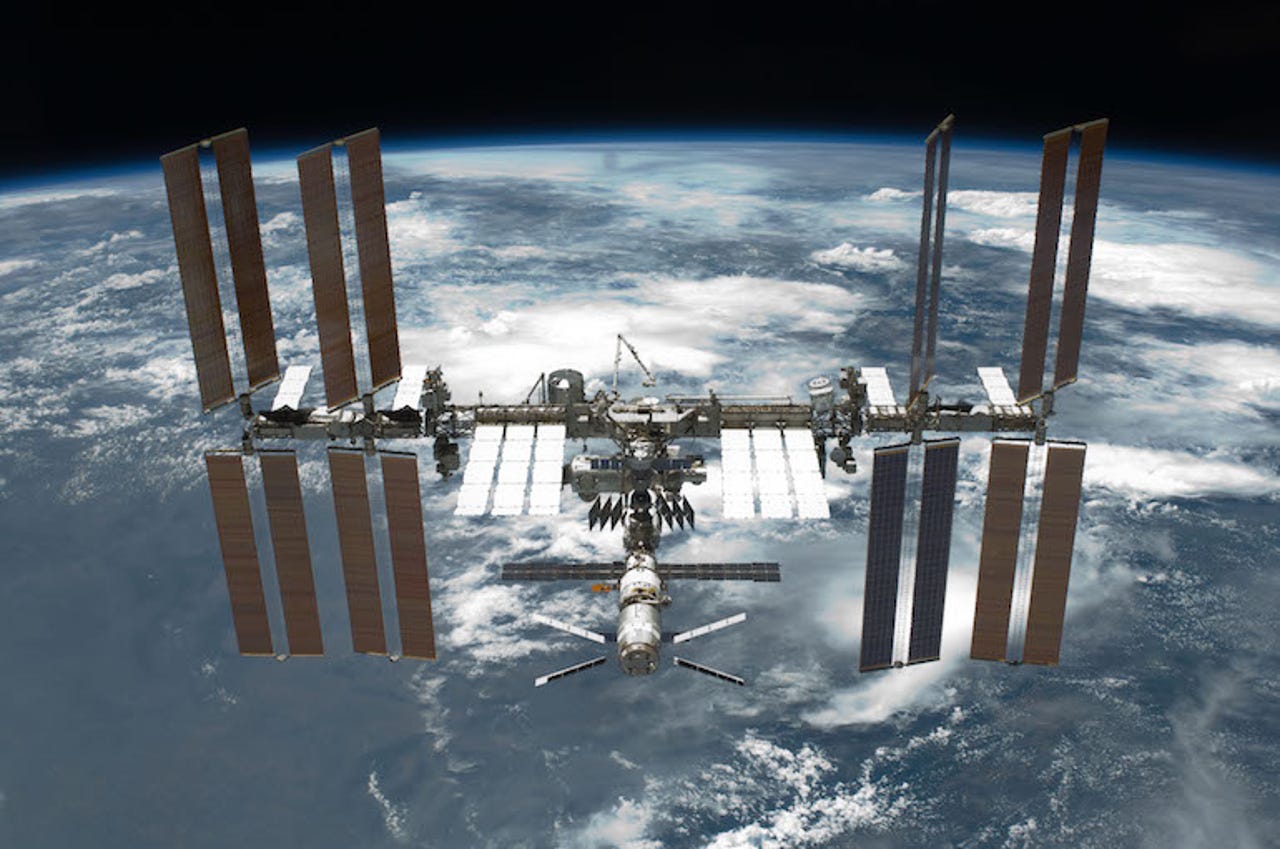
































The International Space Station (ISS).
Image: NASAThe International Space Station (ISS) is expected to be in commission until 2030. Russia, however, claims it intends to leave after 2024. Yuri Borisov, the director general of Russia's space agency Roscosmos, made this declaration in a meeting with Russian President Vladimir Putin, according to a report from TASS, a Russian public news agency.
"We will definitely fulfill all our obligations to our partners, but the decision to withdraw from this station after 2024 has been made," said Borisov. However, NASA has not been officially notified of any Russian plans to withdraw from the ISS, according to NASA Administrator Bill Nelson.
"NASA is committed to the safe operation of the International Space Station through 2030, and is coordinating with our partners. NASA has not been made aware of decisions from any of the partners, though we are continuing to build future capabilities to assure our major presence in low-Earth orbit," Nelson said in a statement provided to ZDNet.
The TASS report said that, in place of the ISS, Russia will begin developing its own station: a Russian Orbital Service Station (ROSS). The ROSS would become the top priority of domestic manned cosmonautics.
SEE:US astronaut Mark Vande Hei describes talking politics with Russians on ISS
Despite its threat to leave early, Russia will likely have to remain a part of the ISS until 2030 because of the costs associated with building their own station, according to Leroy Chiao, former NASA astronaut and International Space Station commander.
"The Russians are posturing," Chiao said to ZDNet. "They don't have the money to build their own station." Building and maintaining spatial technology is very costly. The development, assembly and running costs of the ISS total over$100 billion, according to an ESA explainer.
The funds have not been an effort of a single country but rather the contribution of the United States, Russia, Canada, Japan and 10 of the 20 European nations who are part of ESA over a span of 30 years, according to the ESA explainer. Therefore, it would be extremely difficult for Russia to come up with the money necessary to maintain and create a station on their own.
The amount of time it takes to build a station of the ISS's magnitude is another important factor in whether Russia can leave. "Even if they did, it would take at least six to 10 years to build, which takes them to the end of the ISS anyway," said Chiao.
Given that Russia and the US are the ISS's major contributors, Russia's threat to leave early raises the question: what would their departure mean for the project?
If Roscosmos were to actually leave the ISS, it would be very difficult to keep the ISS running -in spite of the commitment from the Canadian Space Agency (CSA), the European Space Agency (ESA) and the Japan Aerospace Exploration Agency (JAEA) to work with the US to keep it operating until 2030.
The ISS was not designed to be disassembled, and its functionality is interdependent on the US Orbital Segment and the Russian Orbital Segment. Therefore, if Russia left, there would be no way for Russia to cleanly, physically remove the Russian Segment without hindering the overall performance of the ISS.
An explainer on the NASA website states, "attempts to detach the U.S. Orbital Segment and the Russian Segment would encounter major logistical and safety challenges given the multitude of external and internal connections, the need to control spacecraft attitude and altitude, and software interdependency."
Another obstacle for a clean division is that the US and Russia are dependent on each other for ISS resources. Russia provides all of the propulsion for the ISS, which is used for station reboost, attitude control, debris avoidance maneuvers and eventual de-orbit operations. The US, meanwhile, is responsible for the necessary electricity and solar energy, according to NASA.
SEE: NASA delays Viper robot's water-hunting mission on the Moon
In order to bypass this issue, the ISS would have to explore propulsion alternatives, which Col. Terry Virts, retired NASA astronaut, International Space Station Commander and colonel in the United States Air Force, says the US is capable of providing. "The US could build one, I believe in relatively short order, based on existing cargo ship designs," Virts said to ZDNet.
If Russia were to leave the ISS early, it may not necessarily impact the research conducted on board, Virts said. "We don't need them for any other reason (power, data, communication, science, or crew or cargo transport). We currently have all of those capabilities ourselves," he said.
Meanwhile, the United States already has long-term plans for supporting space stations that don't involve Russian cooperation. The US is on a path toward supporting more private, commercially-driven space missions. In fact, the private, Houston-based firm Axiom was formed in order to build a commercial space station to replace the ISS once it's retired. The Ax-1 mission, launched in April, was the first of several that will lead to the 2024 launch of an Axiom habitation module that will attach to the ISS.
Until then, the ISS remains a valuable resource for the global scientific community. Originally built to conduct microgravity research and provide resources for missions to the Moon and other celestial bodies, the ISS remains the largest modular space station in Earth's orbit.
Since its launch, the ISS has facilitated significant progress in space exploration and research. In this year alone, the Axiom Space Mission 1 took a commercial crew to the ISS, Amazon put a storage device on a Space X Falcon 9 rocket to process machine-learning models on the ISS and sensor cameras were developed to share Earth observation data from the ISS.
 Tags chauds:
Innovation et Innovation
l’espace
Tags chauds:
Innovation et Innovation
l’espace